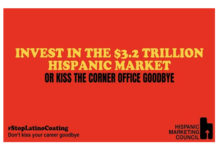Fewer than a quarter of the largest US and Western European asset owners are happy with current ESG indices available to them, according to a new study.
Chief concerns include the opaque nature of indices and the fact that too many focus on environmental (Climate Change) ratings, to the exclusion of the ‘S’ & ‘G’ performance ratings, noted the research from GaiaLens. For the survey, GaiaLens – the ESG data provider for asset owners and asset managers – commissioned investment market research agency Beresford Research to conduct phone interviews with 200 of the largest asset owners. Half of respondents were based in the US; and the other half were located in Western Europe and the UK.
Only 23% of the largest asset owners operating on either side of the Atlantic, together representing Assets Under Management of $50.7 trillion, are happy with the ESG index providers they are currently using. Around 28% declared the ESG index providers’ methodologies to be unclear and/or not robust. Nearly one in five (19.5%) made it clear that a more evenly balanced indexing of all ESG factors was needed; declaring ‘there is a lack of variety’, ie, too many focus just on Climate Change’ today.
Nearly one in six (14%) of allocators went further to declare that ‘none (of the providers) are focusing on the areas of ESG which most concern us.’ And the tussle between ESG performance and investment performance continues; with 15.5% confirming that all of the ESG indexes are delivering investment performance, which is ‘below what our investors expect’.
TOP ESG FRAMEWORKS
GRI Standards, UN’s SDGs and TCFD make up top three ESG reporting frameworks, highlighted the research. Linked to this, the study also probed which ESG reporting frameworks were in use by the largest asset owners on both sides of the Atlantic. The GRI’s (Global Reporting Initiative) Standards are proving to be the most popular; with 57% of asset allocators using them today.
The GRI Standards provide the world’s most comprehensive and widely used standards for sustainability reporting. These standards help organisations understand their outward impacts on the economy, environment, and society; including those on human rights. Organisations can either use the GRI Standards to prepare a sustainability report in accordance with the Standards; or use selected standards to report information for specific users or purposes. For example, reporting their climate change impacts for their investors and consumers.

SUSTAINABLE FUTURE
The UN 17 Sustainable Development goals proved to be the second most popular based on GaiaLens’ findings; with 44.5% of asset owners using the 17 SDGs to guide their ESG reporting. The UN SDGs or Global Goals are a collection of 17 interlinked global goals designed to be a ‘blueprint to achieve a better and more sustainable future for all’. The SDGs were set up in 2015 by the United Nations General Assembly; and are intended to be achieved by the year 2030.
The Taskforce on Climate-related Financial Disclosures (TCFD), assembled by the Financial Stability Board following The Paris Agreement (which came out of COP24 held in December 2018) makes up the third most popular ESG reporting framework. This is used by exactly 30% of the largest asset owners on both sides of the Atlantic, according to GaiaLens’ CIO survey findings.
US & EUROPEAN ESG FAVOURITES
Western European allocators lead on use of GRI, UN SDGs and TCFDs. These ‘top 3’ ESG reporting frameworks are all enjoying higher usage amongst Western European asset owners than US-based allocators. For example, the GRI Standards are used by 60% of Western Europe-based versus 54% of US-based asset owners. Nearly half (48%) of Western Europe’s asset owners have applied UN SDGs for their ESG reporting; versus 41% of US-based asset owners which use it. Finally, 32% of Western Europe-based asset owners have begun using TCFDs as an ESG reporting framework. That percentage falls to 28% for US-based owners.
The Sustainability Accounting Standards Board (SASB) has much higher adoption amongst US asset owners. By contrast, the SASB has nearly doubled its adoption amongst US asset owners as compared with Western Europe-based asset owners; 33% of CIOs and investment decision-makers inside the largest asset owners in the US have adopted the SASB ESG guidance framework and standard. However, only 19% of Western Europe’s asset owners are applying the SASB Standard.
SUSTAINABILITY ACCOUNTING STANDARDS
The SASB Standard identifies the subset of ESG issues most relevant to financial performance in each of 77 industries. They are designed to help companies disclose financially-material sustainability information to investors. The rising star in ESG reporting frameworks is likely to be the EU taxonomy which does not officially go live until 12 July 2022; but already has a strong following amongst over a quarter (27%) of Europe’s largest allocators; whilst only 7% of US allocators are using it to date.
The EU taxonomy is a classification system, establishing a list of environmentally-sustainable economic activities. It could play a key role in helping the EU increase sustainable investment and implement the European ‘green deal’. The EU taxonomy would provide companies, investors and policymakers with appropriate definitions for which economic activities can be considered environmentally sustainable. In this way, it should create security for investors, protect private investors from greenwashing; help companies to become more climate-friendly; mitigate market fragmentation; and help shift investments where they are most needed.
NEW ESG REPORTING FRAMEWORKS
Finally, 8% of US asset owners use an ESG reporting framework they developed themselves; and half that number (4%) of Western Europe’s asset allocators have decided to develop their own ESG reporting framework. It is clear that the ESG reporting frameworks which work best tend to be the ones that maintain independence; and yet are open to collaboration (take GRI and SASB collaboration as one good example).
The successful ones also tend to recognise the distinct differences between different types of industries and sectors; and therefore enable corporations to adjust what they report on in the light of those differences. Some, SASB for example, are also hardwired into financial reporting activities, helping companies to disclose financially-material sustainability information to investors; recognising that, for most asset owners, alpha investment performance cannot be sacrificed in the quest to improve ESG performance.
“It is clear from the level of dissatisfaction with ESG index providers and the wide disparity of ESG reporting frameworks being put to work that ESG ratings remains a messy, opaque world; which is riddled with gaps of data,” stated Co-Founder and GaiaLens’ Co-Founder and Head of ESG Technology, Gordon Tveito-Duncan. “GaiaLens is addressing the very significant Social and Governance data vacuum already facing institutional investors; many of whom indicate in our study that a massive focus on collecting and analysing Environmental data over recent years has left them exposed in terms of the S & G performance reporting.”
The full GaiaLens report is expected to be published in June.
Most people believe their governments and businesses could do more to protect the environment; and only around a quarter trust business sustainability claims, according to the World Economic Forum. Click here to read more.




































